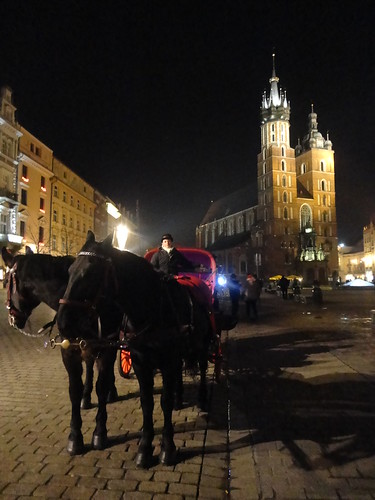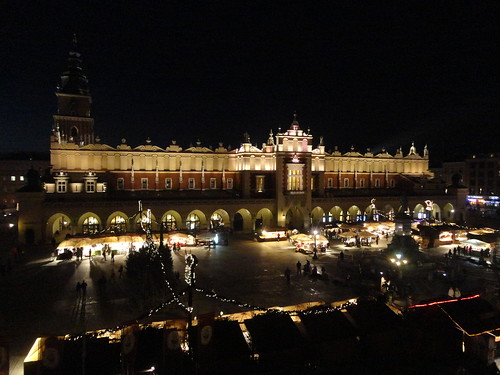A little girls' shoe, a
toy tank and some plastic cups are the only silent reminders of the
fact that people actually used to live here. In the midst of crumbled
walls and shattered glass they lie still on the ground, as time
around them passed by. More than 20 years of abandonment turned the
city of Pstrąże into a ghost town where nature took over. In the
last two decades the city became one of the most interesting places
in Lower-Silesia for urban explorers.
From the moment of
entering the remains of the city, the silence is overwhelming.
Besides some birds and the sound of the wind blowing through the
trees, there's nothing else. The eight-story apartment blocks are the
first thing you see and the idea that thousands of persons used to
live here takes your breath away. The buildings are falling apart,
but it's still fairly safe to enter them, as long as you're being
careful. Trees are growing in the empty rooms and even on top of the
apartment blocks.
From 1945 till 1992 the
city was occupied by Soviet soldiers, who lived in this isolated city
with their wives and kids. Pstrąże used to have a population of
approximately 20.000 inhabitants and was quite a vibrant city. Build
in the well known Soviet style, grey apartment blocks were placed one
after another on one side of the city, next to the railway. On the
other side of the tracks were the barracks, shops, schools, bars, a
swimming pool, a casino and even a small theater. Unfortunately only
a few buildings are still standing and sometimes it's difficult to
see which purpose they served.
The city in the middle of
the woods was first mentioned in the 14th century. It originated as a
small village with the name Pstransse. In 1865 all the buildings were
burned down to the ground by a big fire. In the beginning of the 20st
century the German army began rebuilding the village for own use.
They build a long concrete bridge across the river and also brought a
railway connection with Leszno Górne. Pstrąże, or in Russian
Страхув. was not visible on any map since the Soviet
occupation in 1945 and the main bridge was blown up to prevent the
Poles in the area from entering the premises.


Nowadays you won't find
Pstrąże on your standard GPS navigation system, but on Google Maps
you can see the city and plan your trip. There
is still a smaller bridge that gives entrance to the ghost town by
car. No one lives in the city any more, but sometimes the roads are
still being used by some local farmers to avoid traffic jams and to
save time. Since Pstrąże is surrounded by woods, so in autumn it's
a popular location to pick mushrooms, so don't be surprised if you
see an old Polish lady on a bike, transporting baskets full of the
freshly picked goods.
Every now and then the
site is being used as a military testing ground for rescue workers
and as well for anti-terrorist groups. The last big training was last
year, to practice response in case of a disaster, for example
something similar to the Smoleńsk tragedy. The army, the police,
rescue workers and fire fighters worked together and used Pstrąże
as location.
While walking through the
abandoned city it's sometimes difficult to imagine so many persons
lived here. Everyone had their own life, with their friends and their
loved ones. They did their daily groceries in the shop, they had a
drink in one of the bars and they had to climb the stairs of the
apartment blocks with their laundry. Nothing reminds of these daily
routines any more, most of the rooms look the same and are stripped
down, except for some apartments of creative inhabitants who painted
their walls with curly decorations.
In all the years that went by
every room had different colors on the walls, which now results in a colorful
palette of chipped paint, layer over layer. Most of the floors of the
apartment blocks are accessible, but be careful with the stairs and
with loose bricks and shattered glass. The other, smaller buildings
are mostly more damaged than the blocks. Sometimes walls came down or
whole rooftops collapsed, take a good look at a building before you
enter. Sometimes it's not worth taking the risk because you want to
see the interior. A lot of buildings are quite similar to each other
so it can be wise to just take a look at the next building and enter
there.
If you want to go for some urban exploring the
ruins of Pstraze with your own eyes, get into your car and put
Kozłów or Stara Oleszna in your GPS system. From Wrocław it's
approximately a 1,5 hour drive to these small villages. Drive through
them and a few hundred meters after Kozłów you'll see a sharp turn
to the left, next to some sort of parking place. Take the smaller
road on the right, because the bigger road leads you to the bridge
that was blown up. From this point it's about 1,5 kilometer until you
reach your destination and then the urban exploring can begin.















